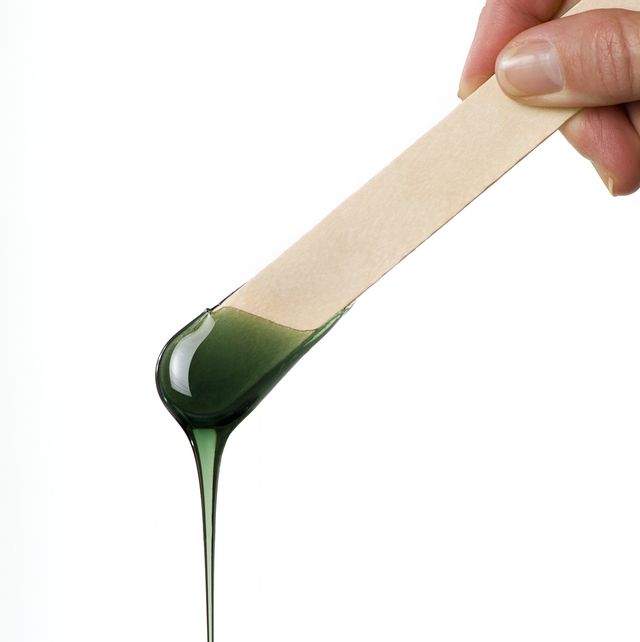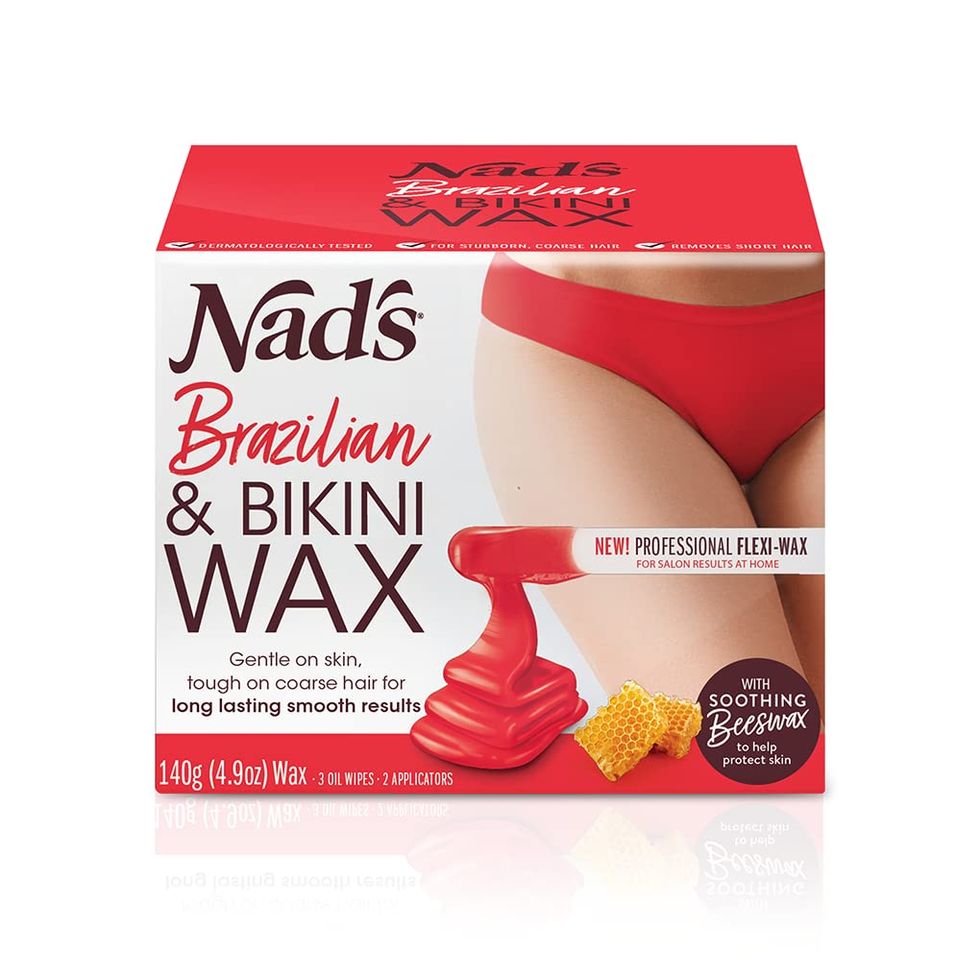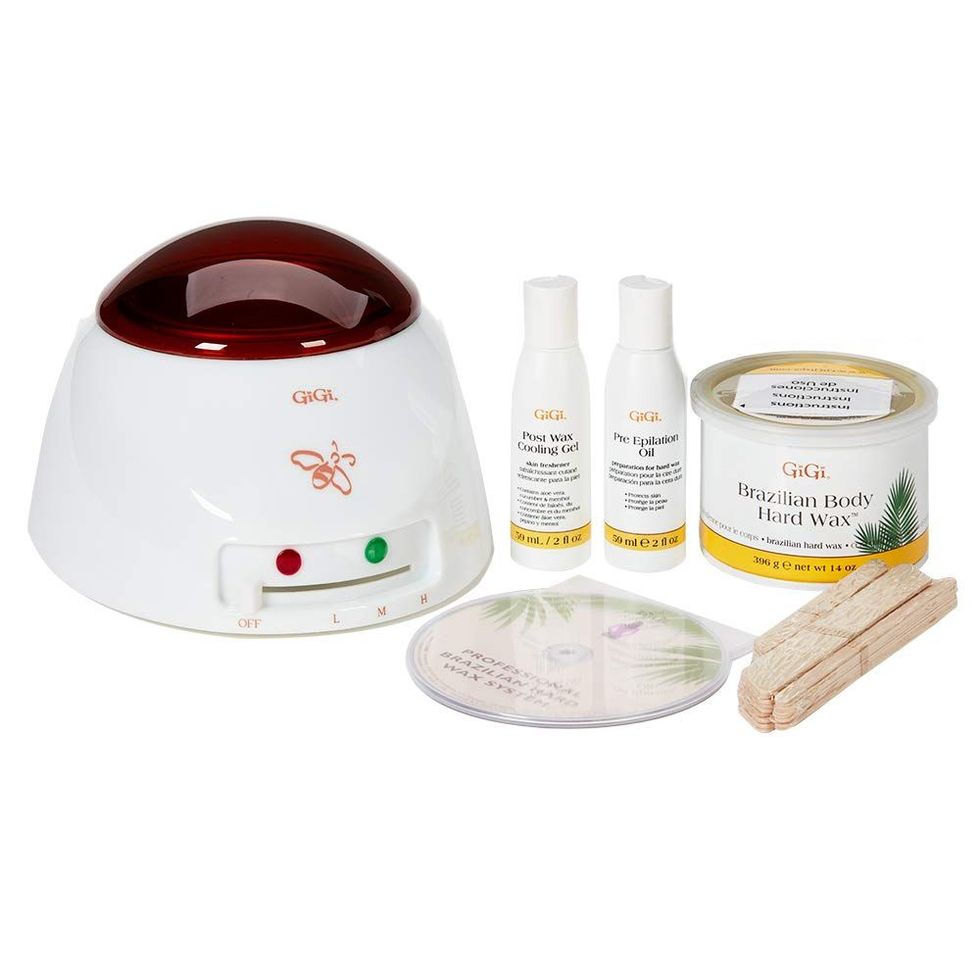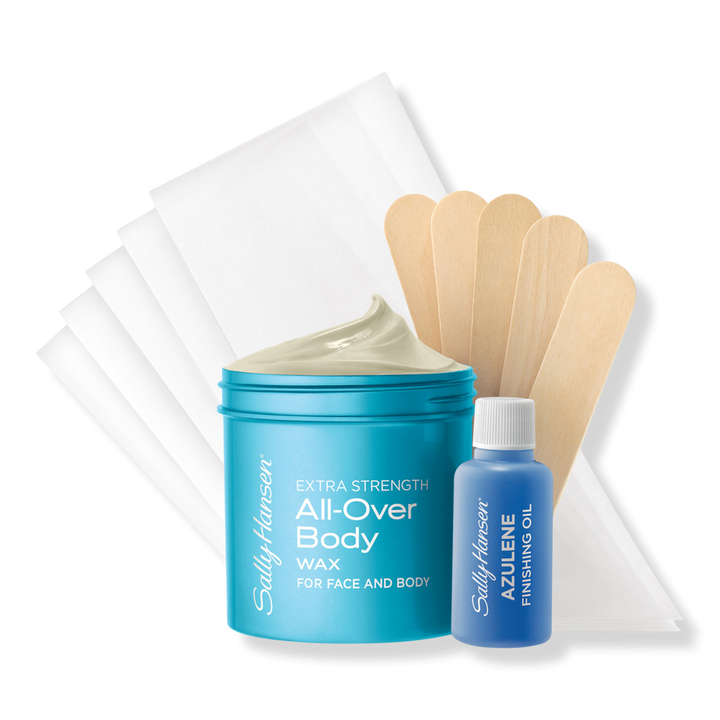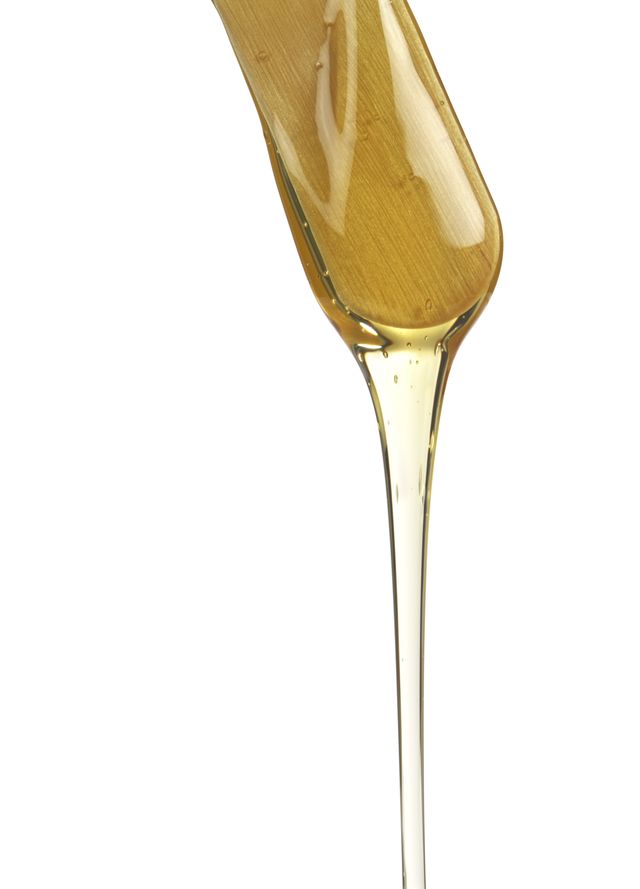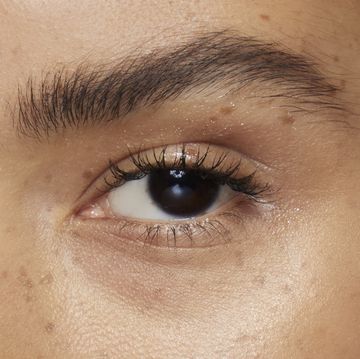A Brazilian wax removes all traces of pubic hair, and as the Cleveland Clinic notes, can be a less irritating, longer-lasting alternative to shaving. But as satisfying as the results may be, Brazilian waxes aren’t known for being easy (or painless). And although booking an appointment with a licensed professional is often recommended for getting rid of hair down there, it’s not always possible.
We understand it can be scary to take waxing into your own hands, but the good news is, there are hundreds of top-rated kits and professional-level products to choose from, and lots of valuable advice. For a breakdown of everything you need to know about how to do your own Brazilian wax at home, we’ve asked the experts for their top tips to make things as smooth as possible for you.
Which type of at-home wax should you buy?
“Be sure to look for a product that specifically says Brazilian on the packaging, as not all formulas are suitable for this sensitive area,” says Natalie Ismiel, brand manager and ambassador for Nad’s hair removal products.“For a first timer, it might be easiest to use a hard wax, as strip waxes are a little bit more difficult to do on your own and take practice.”
Hard wax also puts all of the power in your hands—literally. “Try using hard wax or the sugaring method, as you will be able to have more control of the wax and where you are placing it,” advises Jessica Houston, vice president of operations and lead esthetician at BeautyBeez in Los Angeles.
How can you make sure hard wax is at a safe temperature?
Most at-home wax treatments have clear instructions on how long to heat the product. That said: “It should be the consistency of cold honey,” says New York City–based esthetician Nandi Wagner, who advises doing a test patch of the wax on your inner wrist to make sure it’s not too hot or too runny. Keep in mind you’ll likely need to reheat after 10 to 12 minutes of waxing.
When should you give yourself a Brazilian wax?
Right after a shower, when your skin is clean, soft, and dry. You shouldn’t use any lotion or oils before, but there’s no need to prep with an alcohol pad, either—doing so can overdry the skin. Avoid waxing when you’re on your period (you’ll be extra sensitive) or after you’ve been drinking (we get the impulse, but you’re more prone to bleeding). Also avoid Brazilians if you are taking oral retinoids (often used to treat skin conditions or reduce wrinkles) or using topical Retin-A, or if your skin is irritated or flaky, Ismiel adds.
How do you position yourself for a full Brazilian wax?
It’s time to get flexible. “You might have to change positions a couple of times, depending on the area you are waxing,” Ismiel says. “Try standing, while propping one leg up on a bathtub or chair. This position also works for the inner and back areas.” Though you might want to strategically arrange a mirror (or two). “Stand in front of a mirror, if possible, to give yourself extra visibility,” she adds. “If you have trouble reaching, you can also lay in front of a standing mirror, while bending your knees and spreading your legs widely. Prop up your lower back with a pillow. You can do this on the floor or on your bed on top of a towel.”
Don’t rush into things, though; it’s smart to trial-run each pose before you even heat up the wax. “Before you start, be sure you test out different positions to see what is most comfortable for you and provides the best reach for each area you plan to wax,” Ismiel says.
Which areas should you start waxing first?
The top inner thigh by your hip area. “It’s a horrible analogy,” Wagner says, “but it works: Think of mowing the lawn. You don’t start in the middle of the yard where the grass is thickest, because if you do, your mower is going to get stuck and stall out. You always start from the edges where it’s thinnest and work your way in.”
Also, remember that smaller areas are easier to work with. “Work in smaller sections,” says Houston. “Though it may take longer, you won’t get in a situation where you have to pull a massive strip that you are now fearful to pull.”
What’s the best method for applying wax to your skin?
“Apply it in a swirling motion, like you’re putting peanut butter on a piece of bread. This ensures that you’re catching all the hair in the wax. When you’re done, the wax should be about the thickness of a quarter or nickel,” Wagner says. Make sure the end of the wax is in a place where there's no hair, so you can get the best possible grip on it. Then, when the wax feels tacky—but not sticky—it’s ready to be removed.
In which direction should you pull wax strips to evenly remove hair?
You want to pull in the opposite direction of hair growth, but it can be tricky to figure out which way that is. Wagner says: “On most people, hair grows in toward the center. This is biological—the hair is there to protect our reproductive organs. So if you’re starting at the top, the hair grows downward, so you want to swirl the wax on in a downward motion, then pull up towards you. When you’re in the back, do the opposite.” When you get down to the sides of your inner thighs, the hair is growing toward the center, but sideways, so you will need to switch from pulling up or down.
And about that one hard-to-reach area? “Evolution hasn’t evolved so that we can see the rear, so this is a hard area to do on your own,” Wagner acknowledges. “If you’re going to attempt it, you want to lean back—not so much that your back is flat on the ground, but at an incline—and work one side at a time.”
What are the best products to soothe skin after a wax?
First things first: Try to relax. “The most important thing is to read the instructions and precautions thoroughly before waxing, to minimize pain and irritation. Sometimes the pain can be caused by anxiety you may be feeling about waxing,” Ismiel explains. “Once you’ve done your first wax, you’ll find that every wax after that gets easier and less painful.”
Beyond chilling out mentally, prime your body for the experience physically. “Try not to drink significant amounts of alcohol or coffee before waxing, as it can tighten your pores and feel more painful,” she notes. And it bears repeating: “It’s best not to wax during your period, as you will likely be more sensitive and prone to experience discomfort.”
Instead of liquid courage, prep with Advil or Tylenol. “Take a pain reliever before starting your wax,” recommends Houston. You can also fool your body by holding your skin taut while you wax, Wagner says: “The tighter and smoother the skin is, the easier it’ll be to remove the hair. It’ll also be less painful because the pressure of pulling the skin tricks your pain sensors in that area.”
Finally, don’t forget the most important thing: breathing. “Take a deep breath before pulling your strip,” Houston says.
What methods should you use to clean up the area?
Most at-home wax treatments contain product essentials to soothe tender skin while removing extra wax. If you need reinforcements, coconut oil will help remove any residual wax, and a cool compress and witch hazel will help calm skin. “Steer away from fragrances or creams with fragrance to reduce irritation,” Ismiel says. For the next 24 hours, wear cotton underwear and skip workouts, steams, or saunas—all things that can clog your still-open follicles.
What are some of the best ways to maintain a Brazilian wax?
“After waxing, you should exfoliate at least three times per week to prevent ingrown hairs,” Ismiel says. Wagner recommends regularly using glycolic wipes to keep the area exfoliated, and coconut oil to moisturize and soften the regrowth after the first 24 hours. “If you think you want to stick to waxing, try not to shave between waxes to reduce irritation and ingrown hairs. Hair can grow back thinner and weaker the more you wax,” Ismiel adds.
